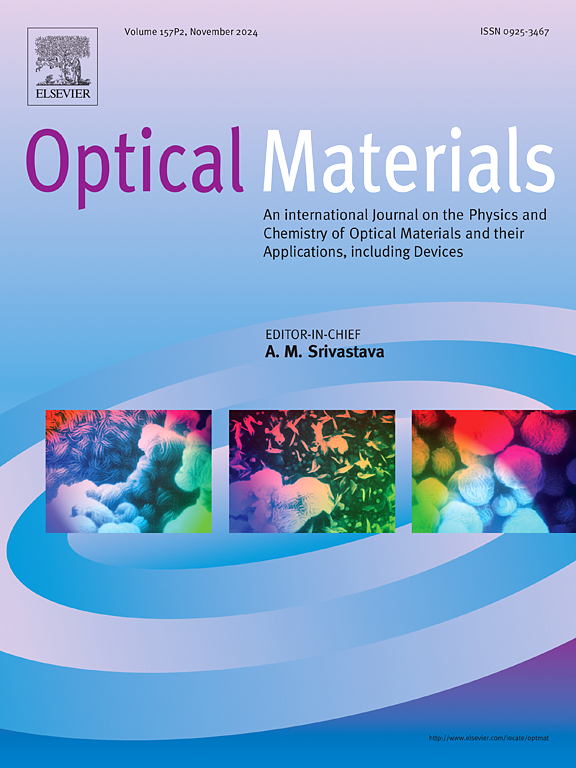溅射AlN/Al2O3分布在非晶玻璃上的布拉格反射体
IF 3.8
3区 材料科学
Q2 MATERIALS SCIENCE, MULTIDISCIPLINARY
引用次数: 0
摘要
随着垂直腔面发射激光器(VCSELs)需求的急剧增加,对高性能、快速散热的分布式布拉格反射器(DBRs)的需求在光子和光电子器件中变得非常迫切。在这项工作中,通过射频溅射技术在非晶硅酸钠玻璃衬底上设计并制备了一种由氮化铝(AlN)和氧化铝(Al2O3)交替组成的新型DBR。本文从理论和实验两方面探讨了叠层数对dbr反射率的影响。结果表明,11.5对AlN/Al2O3 dbr可达到96%的反射率。阻带带宽覆盖720 ~ 880 nm。表面粗糙度约为2.9 nm,面积为9 μm2。溅射生长的AlN/Al2O3 DBR具有高反射率和低表面粗糙度,为高性能、快速散热DBR在光子集成电路中的潜在应用奠定了良好的基础。本文章由计算机程序翻译,如有差异,请以英文原文为准。
Sputtered AlN/Al2O3 distributed Bragg reflectors on amorphous glass
With the sharp increase in the demand for vertical-cavity surface-emitting lasers (VCSELs), the need for high-performance and rapid thermal dissipation distributed Bragg reflectors (DBRs) has become significantly urgent in photonic and optoelectronic devices. In this work, a novel DBR composed of alternating aluminum nitride (AlN) and alumina (Al2O3) has been designed and prepared on an amorphous sodium silicate glass substrate via radio frequency (RF) sputtering technique. The effect of a number of stacks on the reflectance of DBRs has been explored theoretically and experimentally. The results show that AlN/Al2O3 DBRs with 11.5 pairs can achieve 96 % of reflectance. The stopband bandwidth covers from 720 to 880 nm. The surface roughness is around 2.9 nm with an area of 9 μm2. Our sputtering-grown AlN/Al2O3 DBR with high reflectance and low surface roughness has laid a good foundation for the potential application of high-performance and rapid thermal dissipation DBRs in photonic integrated circuits.
求助全文
通过发布文献求助,成功后即可免费获取论文全文。
去求助
来源期刊

Optical Materials
工程技术-材料科学:综合
CiteScore
6.60
自引率
12.80%
发文量
1265
审稿时长
38 days
期刊介绍:
Optical Materials has an open access mirror journal Optical Materials: X, sharing the same aims and scope, editorial team, submission system and rigorous peer review.
The purpose of Optical Materials is to provide a means of communication and technology transfer between researchers who are interested in materials for potential device applications. The journal publishes original papers and review articles on the design, synthesis, characterisation and applications of optical materials.
OPTICAL MATERIALS focuses on:
• Optical Properties of Material Systems;
• The Materials Aspects of Optical Phenomena;
• The Materials Aspects of Devices and Applications.
Authors can submit separate research elements describing their data to Data in Brief and methods to Methods X.
 求助内容:
求助内容: 应助结果提醒方式:
应助结果提醒方式:


